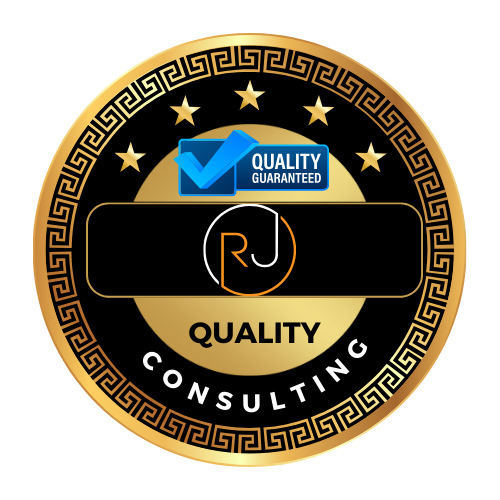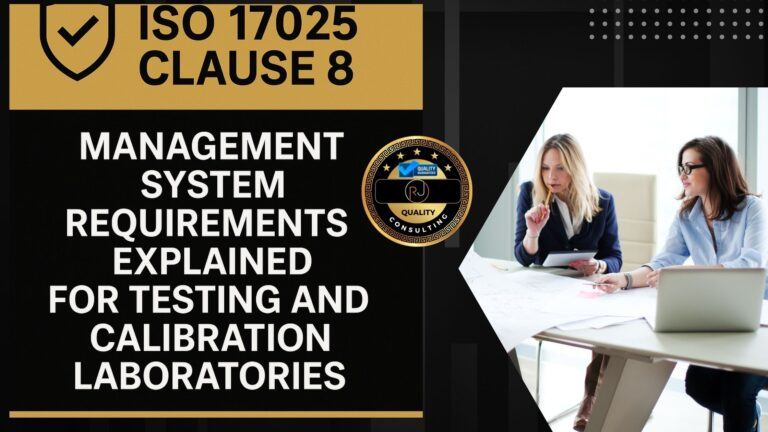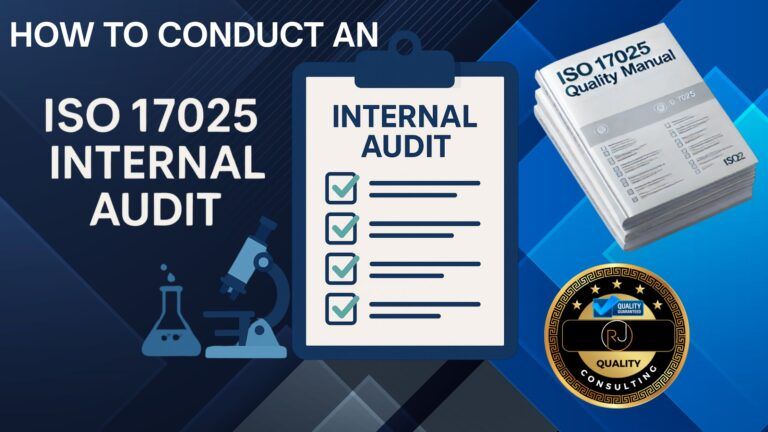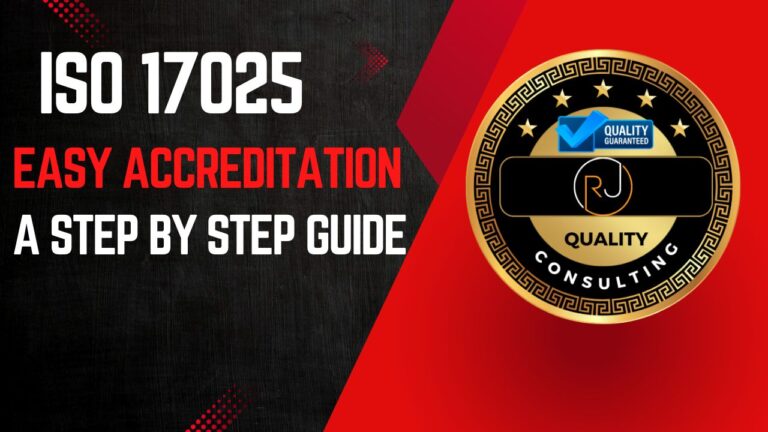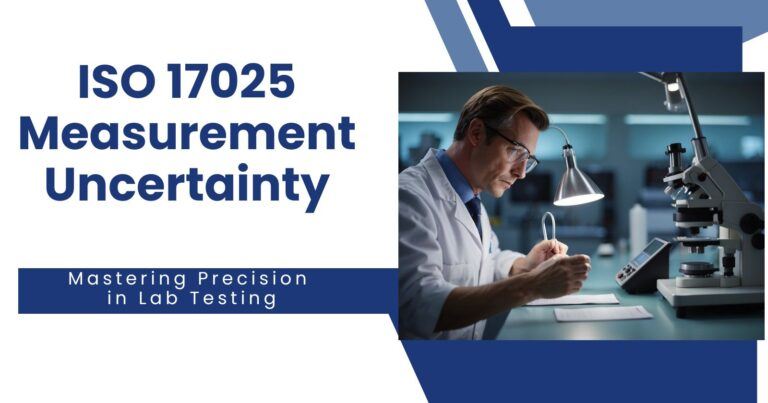ISO 17025 Management Review Template: Essential Components for Laboratory Compliance
As a certified ISO/IEC 17025 assessor, I’ve helped numerous laboratories streamline their management review processes. One of the most common challenges I see is that reviews often become a checkbox exercise rather than a valuable tool for continuous improvement. To solve this, I created an ISO 17025 Management Review Template that not only ensures compliance with ISO/IEC 17025:2017 Clause 8.9 but also makes reviews more structured, actionable, and impactful.
In this guide, I’ll walk you through how to use this template effectively, covering:
- The required components of an ISO 17025 management review
- Step-by-step instructions for completing the template
- Common pitfalls and how to avoid them
- A video walkthrough to show the template in action
An ISO 17025 management review template streamlines the process of evaluating your laboratory’s quality management system. These reviews help you meet ISO/IEC 17025:2017 requirements and maintain accreditation status. A well-designed template ensures you cover all essential aspects like workload analysis, customer feedback, and risk assessment while documenting your findings systematically.

Quality management reviews need structure and organization to be effective. A template guides you through each required element, making sure nothing gets missed. This helps you track performance, identify areas for improvement, and make data-driven decisions about your laboratory operations.
The template serves as a framework for gathering input from staff, analyzing data, and creating action plans. You can customize it to fit your specific laboratory needs while maintaining compliance with ISO 17025 standards.
Key Takeaways
ISO/IEC 17025 Implementation Masterclass
Complete documentation + step-by-step training to get your lab accreditation-ready with confidence.
What you get (features)
- Customizable Quality Manual aligned to ISO/IEC 17025
- All required policies & procedures with matching forms/templates
- 7 training modules (Clauses 4–8, internal audit & management review)
- 20-question quiz + certificate of completion
- Clear instructions on tailoring documents to your lab
Why it matters (benefits)
- Implement faster with proven, audit-ready templates
- Train your team consistently and reduce nonconformities
- Show competence to assessors with documented training & certificate
- Confidently prepare for internal & external audits
- Move from “paper compliance” to a working quality system
- A management review template provides a structured approach to evaluate laboratory performance and maintain ISO 17025 compliance
- Regular reviews using standardized templates help identify risks and opportunities for improvement
- Documentation through templates ensures consistent reporting and helps track progress over time
How to Use the ISO 17025 Management Review Template
To ensure your management reviews are effective and compliant, follow these steps when using the template:
Step 1: Document Meeting Details
First things first:
- Record the date, location, and attendees.
- Assign a chairperson and secretary for accountability.
💡 Tip: Rotate the chairperson role periodically to bring in fresh perspectives.
Step 2: Review Key Agenda Items (Clause 8.9.2 Requirements)
ISO 17025 requires you to review:
✅ Changes in internal and external factors impacting the laboratory
✅ Results from internal audits and corrective actions
✅ Customer feedback, complaints, and risks
✅ Adequacy of resources & training needs
💡 Tip: Always document why an agenda item was skipped for transparency.
Step 3: Capture Discussion Points & Action Items
- Summarize key discussions in each section.
- Assign action items with due dates and responsible persons.
- Track the status of previous action items.
💡 Tip: Use project management tools like Trello or Asana to track these follow-ups between reviews.
Watch the Video Tutorial:
Step-by-Step Walkthrough of How to use my ISO 17025 Management Review Template
🎥 Want to see exactly how to fill out this template? Watch my step-by-step video tutorial where I:
✅ Walk through each section of the template
✅ Share best practices for documentation
✅ Show real-world examples of ISO 17025 compliance
💡 Tip: Watching the video while filling out the template will help you understand key compliance points and avoid common mistakes.
Significance of ISO/IEC 17025 in Testing and Calibration Laboratories
The standard helps your laboratory establish reliable testing and calibration processes. It focuses on technical competence and quality management system requirements.
Your lab must maintain proper documentation of procedures, methods, and results. This creates consistency and traceability in your operations.
The standard covers five main areas: general requirements, structural requirements, resource requirements, process requirements, and management system requirements.
Accreditation to ISO/IEC 17025 proves your lab’s technical competence to customers and regulatory bodies. It helps you win more contracts and maintain compliance.
Comparison with ISO 9001
While ISO 9001 focuses on general quality management, ISO/IEC 17025 specifically addresses laboratory operations and technical competence.
ISO/IEC 17025 includes all quality management elements from ISO 9001 plus additional technical requirements for labs. These extra requirements cover:
- Method validation
- Measurement uncertainty
- Equipment calibration
- Sample handling
- Test result reporting
Your lab can integrate both standards, but ISO/IEC 17025 is essential for demonstrating testing and calibration competence.
Planning the Management Review

A well-planned management review helps identify system improvements and ensures your laboratory meets ISO 17025 requirements. Regular reviews assess both adequacy and effectiveness while addressing potential risks.
Establishing Objectives for Review
Your management review objectives need to align with your lab’s quality goals. Start by defining clear metrics to evaluate system performance.
Set specific targets for key areas:
- Quality control results
- Client feedback trends
- Staff competency assessments
- Equipment calibration status
- Method validation data
Include risk assessment criteria to identify potential issues before they impact operations. Document your objectives in measurable terms to track progress effectively.
Developing an ISO 17025 Management Review Template and Agenda
Create a structured agenda to guide your review meeting. List all required discussion points in order of priority.
Key agenda items to include:
- Previous review actions and their completion status
- Changes affecting the management system
- Quality policy and objectives progress
- Recent audit findings
- Corrective action effectiveness
Schedule the review at least 2 weeks in advance. Give participants time to prepare relevant data and reports. Keep the meeting focused by setting time limits for each agenda item.
Distribute the agenda to all participants beforehand. This helps them gather necessary information and contribute meaningfully to discussions.
Management Review Inputs

Management review inputs form the foundation for evaluating laboratory performance and making informed decisions. These inputs come from multiple sources and help identify risks while tracking progress on previous improvements.
Analysis of Previous Reviews
Your Management Review Record needs to track the status of actions from past reviews. Document whether previous objectives were met and what roadblocks prevented completion.
Start by examining the effectiveness of implemented changes. Mark each action item as complete, in progress, or delayed.
Create a risk register to monitor ongoing challenges identified in earlier reviews. Update it with new risks and modified control measures.
Feedback and Recommendations for Improvement
You must collect feedback from multiple channels to identify areas needing attention. Customer complaints and satisfaction surveys provide valuable insights into service quality.
Staff suggestions and audit findings help spot operational issues. Record these in your Management Review Record with proposed solutions.
Consider resource needs, including equipment, training, and personnel. Note any gaps that could affect quality or service delivery.
List specific improvement recommendations with:
- Proposed changes to procedures
- Required resources
- Target completion dates
- Staff responsibilities
Implementation Strategies

Successful ISO 17025 management review implementation requires proper training programs and well-structured documentation tools. These elements work together to create a smooth transition and maintain compliance.
Role of Training in Effective Implementation
Your staff needs specific training to understand and execute management review processes correctly. Schedule regular training sessions that cover both theoretical concepts and hands-on practice.
Create a training matrix to track employee competencies and certification requirements. This helps identify gaps in knowledge and ensures all team members maintain necessary skills.
Key Training Components:
- Management review meeting procedures
- Documentation requirements
- Data analysis techniques
- Corrective action processes
Utilizing Templates and Forms
Templates and forms streamline your management review process and ensure consistency. Use standardized documents to capture all required information efficiently.
Essential Templates Include:
- Meeting agenda templates
- Performance metric tracking sheets
- Action item logs
- Follow-up documentation forms
Your templates should be easy to use and include clear instructions. Make sure they align with ISO 17025:2017 requirements and your lab’s specific needs.
Store all templates in a central location where your team can access them easily. Update your forms regularly based on feedback and changing requirements.
Document Control and Record Keeping

ISO 17025 requires clear procedures for managing laboratory documents and records. A well-structured system helps track changes, maintain compliance, and simplify audits.
Management System Template
The management system template provides a framework for organizing your lab’s essential documents. You’ll need lists to track active documents, revisions, and document owners. Consider using a document numbering system like “DOC-001” for easy reference.
Your template should include forms for:
- Document change requests
- Version control logs
- Distribution lists
- Review schedules
Keep maintenance records separate and clearly labeled. Store both electronic and physical copies in secure, accessible locations.
Quality Manual Template
The quality manual template forms the foundation of your document control system. Create sections for policies, procedures, and work instructions.
Key elements to include:
- Document approval process
- Record retention periods
- Access control measures
- Template standardization
Use consistent formatting across all documents. Your manual should specify who can edit documents and how changes are approved.
Make regular backups of electronic records. Set up a system to track document reviews and updates.
Internal Audit and Compliance

Internal audits and compliance procedures form the backbone of ISO 17025 laboratory quality management. Regular assessments and clear documentation help maintain high standards and prepare labs for external audits.
Developing Internal Audit Procedures
Your internal audit procedures must follow a structured approach. Start by creating a yearly audit schedule that covers all key laboratory processes and systems.
Use detailed checklists to evaluate equipment calibration, personnel qualifications, and quality management processes. Document every finding thoroughly in your audit reports.
Train your internal auditors to look for objective evidence and maintain impartiality during assessments. They should note both conformities and non-conformities.
Set clear timelines for completing corrective actions after each audit. Track these actions in a centralized system to ensure proper follow-up.
Ensuring Laboratory Compliance
Check your lab’s activities against ISO 17025 requirements regularly. Keep detailed records of all testing procedures, calibrations, and quality control measures.
Key compliance areas to monitor:
- Equipment maintenance and calibration records
- Staff training documentation
- Test method validation data
- Quality control results
- Customer feedback
Review your quality management system documentation every six months. Update procedures when needed to reflect current practices.
Maintain a system for handling non-conforming work. Create clear steps for identifying, documenting, and correcting problems that affect test quality.
Evaluating Laboratory Operations

A systematic evaluation of your laboratory operations helps maintain accuracy and reliability in testing and calibration activities. Regular monitoring ensures your processes meet ISO 17025 requirements.
Assessing Calibration Laboratory Functions
Your calibration laboratory needs consistent checks of equipment performance and staff competency. Track all calibration activities in a standardized log that includes dates, methods used, and results obtained.
Key monitoring areas:
- Equipment maintenance schedules
- Staff training records
- Method validation data
- Customer feedback reports
Check your reference standards against national or international benchmarks every 6-12 months. Document any deviations or adjustments made during calibration procedures.
Monitoring Measurement Uncertainty
You must calculate and record measurement uncertainty for each type of calibration or test performed. Keep clear documentation of your uncertainty calculations and contributing factors.
Essential uncertainty components:
- Equipment specifications
- Environmental conditions
- Reference material purity
- Method repeatability
Review your measurement uncertainty values quarterly to identify trends or shifts in performance. Make sure your reported uncertainties meet customer requirements and industry standards.
Update your uncertainty calculations when you change equipment or procedures. Document all factors that could affect measurement accuracy in your quality records.
Management Review Outputs
Management review outputs create actionable items and documented decisions to improve laboratory operations and effectiveness. They guide quality system updates and resource allocation.
Management Review Template
A well-designed management review template captures key decisions and actions. You need to record specific improvements for your quality management system.
Document all changes needed for policies and procedures. Include resource requirements like staff training or new equipment purchases.
List action items with clear ownership and deadlines. Bold important decisions about management system changes and resource allocation.
Track the status of previous action items from past reviews. Your template should have sections for:
- Effectiveness of implemented changes
- Status of assigned tasks
- Timeline updates for ongoing projects
Maintenance and Continual Improvement
Your management review outputs drive system maintenance and improvements. Set measurable goals for enhancing laboratory performance.
Create action plans to address any identified gaps or opportunities. Focus on both short-term fixes and long-term strategic improvements.
Track progress through regular monitoring between reviews. Update your quality manual and procedures based on review decisions.
Keep detailed records of:
- Approved system changes
- Resource allocations
- Training requirements
- Equipment updates
- Process improvements
Confidentiality and Ethics
Labs must protect client information while maintaining high ethical standards in testing activities. Strong confidentiality practices and ethical guidelines help build trust and ensure reliable results.
Maintaining Confidentiality in Documentation
Your lab needs clear policies to protect sensitive client data in all documentation. Set up secure storage systems for test reports, calibration certificates, and client communications.
Train your staff on proper handling of confidential information. This includes both paper records and digital files.
Implement access controls to limit document viewing to authorized personnel only. Use password protection for electronic records and locked storage for physical documents.
Create non-disclosure agreements for staff and contractors who handle client information. Review these agreements annually to ensure compliance.
Ethical Considerations for Testing and Calibration
Your testing procedures must follow strict ethical guidelines to maintain accuracy and impartiality. Document all testing methods clearly and follow them consistently.
Report results truthfully without manipulation or bias. If you find errors, correct them promptly and notify affected clients.
Keep detailed records of equipment calibration and maintenance. This helps prove your commitment to accurate results.
Avoid conflicts of interest in your testing work. Decline projects where your independence might be questioned.
Train staff regularly on ethical practices and professional conduct. Include real examples of ethical decisions in your training materials.
Resources and Customization
ISO 17025 management review templates come in multiple formats and can be adapted to match specific laboratory needs. The right tools make quality management easier and more efficient.
Selecting Customizable Templates
Templates are available in Microsoft Word, Excel, and PowerPoint formats for maximum flexibility. You can modify these documents to include your lab’s specific metrics and compliance requirements.
Start with a basic template and add sections that align with your processes. Include spaces for key performance indicators, staff responsibilities, and unique laboratory procedures.
Many providers offer template bundles with complete documentation sets. These typically include forms, checklists, and logs needed for ISO 17025 implementation.
Procedure Template and Assessment Form Usage
Your procedure template should list clear steps for conducting management reviews. Add sections for recording meeting dates, attendees, and action items.
Assessment forms help track review outcomes and compliance status. Create separate sections for different evaluation criteria like equipment calibration, staff training, and quality control.
Make sure your forms include spaces to document corrective actions and follow-up tasks. Set up regular review cycles – at least once every 12 months as required by standards.
Use checklists to verify all required elements are covered during reviews. This helps maintain consistency across different review sessions.
Communication and Reporting
Clear communication and accurate reporting form critical parts of the ISO 17025 management review process. The exchange of measurement data and review outcomes requires structured methods to ensure accuracy and understanding across teams.
Evaluating and Reporting Measurement Uncertainty
You must document measurement uncertainty using standardized formats in your management review reports. Include specific numerical values and confidence intervals for all test results.
Create a clear uncertainty budget that lists all contributing factors to measurement variability. This helps track and improve testing accuracy over time.
Key elements to include:
- Uncertainty calculations for each test method
- Statistical confidence levels
- Equipment calibration status
- Environmental conditions
- Operator competency assessments
Effective Communication of Review Outcomes
Your management review findings need distribution to all relevant personnel through structured channels. Use a mix of written reports and face-to-face meetings to share results.
Required communication elements:
- Test result summaries
- Quality objectives progress
- Corrective actions needed
- Resource requirements
- Training needs
Set up regular feedback channels between laboratory staff and management. This ensures everyone stays informed about quality improvements and required changes.
Document all communications in your review template. Track who received information and when to maintain clear audit trails.
Frequently Asked Questions
Management reviews form a key part of laboratory quality systems and need specific documentation, timing, and follow-up actions to meet ISO 17025 requirements.
What does a management review under ISO 17025 involve?
A management review evaluates your lab’s performance and identifies ways to improve. The review looks at test results, customer feedback, and quality control data.
Your team must check if current procedures work well and if staff members follow the rules correctly.
How often should management reviews be conducted according to ISO 17025 standards?
You must complete at least one management review every 12 months. Some labs choose to do reviews more often to stay on top of issues.
What essential elements should be included in an ISO 17025 management review meeting minutes?
Your meeting minutes need to record all discussions about quality system performance. Include action items, who will handle them, and when they should be done.
Write down any changes needed in policies or procedures. Keep track of resources needed for improvements.
Can you explain the management requirements specific to ISO 17025?
Your lab must have clear policies for quality control. Set up systems to track and improve testing accuracy.
Make sure staff members get proper training. Keep records of all quality-related activities.
How should non-conformities be addressed during an ISO 17025 management review?
Look at each problem found during testing or audits. Create specific plans to fix these issues.
Track progress on fixing problems from past reviews. Set deadlines for completing corrective actions.
What record-keeping procedures should be followed for ISO 17025 management reviews?
Keep detailed notes from each review meeting. Store all related documents in a secure place.
Save evidence of completed improvements. Make sure you can find past review records easily when needed.
Final Thoughts: Streamline Your ISO 17025 Management Reviews
Conducting an effective ISO 17025 management review doesn’t have to be overwhelming. With the right structure, you can ensure compliance while driving real improvements in your laboratory’s operations.
✅ Next Steps:
📌 [Click Here to Download the Management Review Template]
📌 [Click Here to Book Your FREE 45-Minute Consultation]
💡 Have questions? Drop them in the comments, and I’ll be happy to help!
🕒 Book Your Free 45-Minute Consultation
Have questions about ISO/IEC 17025 or ISO 9001 implementation or accreditation? Schedule a free 45-minute consultation with me to discuss your Company or laboratory’s needs and how we can achieve compliance together.
Schedule Your Consultation